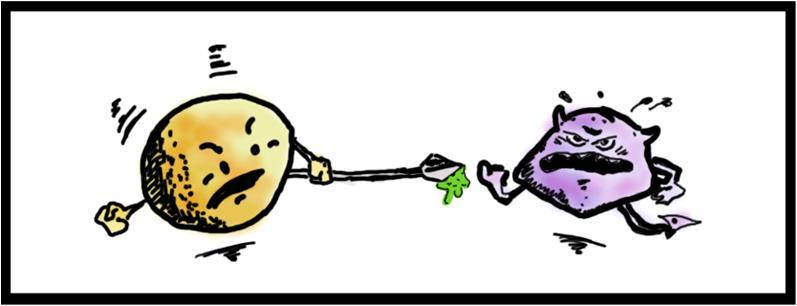Team:Washington/Gram Negative
From 2010.igem.org
m (→Regulating the Probiotic) |
(→Regulating the Probiotic) |
||
| Line 31: | Line 31: | ||
=Regulating the Probiotic= | =Regulating the Probiotic= | ||
| - | One of the goals of this project is to regulate the Tse2/Tsi2 locus so that the probiotic only kills cells when a pathogen is present. This would require a promoter that is induced by an excreted molecule unique to a specific pathogenic gram-negative species. As a proof of concept, this project uses the LuxR-pLux transcription factor- promoter system from ''Vibrio fischeri'' to regulate expression of the Tse2-Tsi2 locus. ''V. fischeri'' excretes 3OC6HSL, a small cell membrane permeable molecule. 3OC6HSL binds to LuxR, | + | One of the goals of this project is to regulate the Tse2/Tsi2 locus so that the probiotic only kills cells when a pathogen is present. This would require a promoter that is induced by an excreted molecule unique to a specific pathogenic gram-negative species. As a proof of concept, this project uses the LuxR-pLux transcription factor- promoter system from ''Vibrio fischeri'' to regulate expression of the Tse2-Tsi2 locus. ''V. fischeri'' excretes 3OC6HSL, a small cell membrane permeable molecule. 3OC6HSL binds to LuxR, changing the conformation of LuxR, resulting in expression from the pLux promoter. Since ''V. fischeri'' also produces 3OC6HSL, expression from the pLux promoter is linked to cell density. This is referred to as quorum sensing. Quorum sensing is found in many pathogenic species, making the use of the pLux-LuxR system a good proof-of concept. When our probiotic detects a gram-negative pathogen-specific molecule ( modeled by 3OC6HSL), transcription is induced from an inducible promoter( modeled by pLux). This leads to expression of Tse2 ( a toxic protein) and Tsi2 ( its antitoxin). The Type VI Secretion System then attacks the pathogen, puncturing the cell wall. Tse2 is then secreted into the gram negative pathogen, killing the pathogen. |
==Type VI Secretion== | ==Type VI Secretion== | ||
Revision as of 04:40, 9 October 2010
Probiotics in a Gram-Negative Organism
The T6SS/Tse2 System
Our plan is to turn the Type VI Secretion System (T6SS)/Tse2 from Pseudomonas aeruginosa into a targeted antibiotic suitable for use in E. coli. The T6SS is a 22 protein complex found in many gram-negative species ( including P. aeruginosa, but not E. coli). The T6SS acts much like a spear, physically puncturing the cell membrane of the target cell and providing a channel through which proteins can be secreted. In P. aeruginosa, one of the major substrates of the T6SS is the toxic protein Tse2 (Type Six Excreted 2). Normally, Tse2 forms a complex with Tsi2 ( Type Six Immunity 2), a protein co-expressed with Tse2 that acts as an antitoxin. Before secretion of Tse2, Tsi2 dissociates from Tse2. Tse2 is then secreted into the target cell by the T6SS, killing the target cell.
Regulating the Probiotic
One of the goals of this project is to regulate the Tse2/Tsi2 locus so that the probiotic only kills cells when a pathogen is present. This would require a promoter that is induced by an excreted molecule unique to a specific pathogenic gram-negative species. As a proof of concept, this project uses the LuxR-pLux transcription factor- promoter system from Vibrio fischeri to regulate expression of the Tse2-Tsi2 locus. V. fischeri excretes 3OC6HSL, a small cell membrane permeable molecule. 3OC6HSL binds to LuxR, changing the conformation of LuxR, resulting in expression from the pLux promoter. Since V. fischeri also produces 3OC6HSL, expression from the pLux promoter is linked to cell density. This is referred to as quorum sensing. Quorum sensing is found in many pathogenic species, making the use of the pLux-LuxR system a good proof-of concept. When our probiotic detects a gram-negative pathogen-specific molecule ( modeled by 3OC6HSL), transcription is induced from an inducible promoter( modeled by pLux). This leads to expression of Tse2 ( a toxic protein) and Tsi2 ( its antitoxin). The Type VI Secretion System then attacks the pathogen, puncturing the cell wall. Tse2 is then secreted into the gram negative pathogen, killing the pathogen.
Type VI Secretion
 "
"


